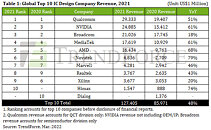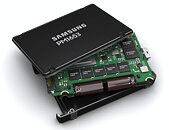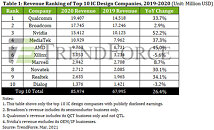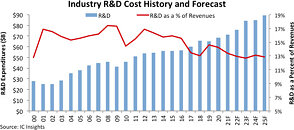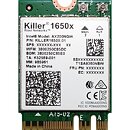
Intel and Broadcom Achieve Major Wi-Fi 7 Industry Milestone
Today, Intel Corporation and Broadcom Inc. showcased the industry's first cross-vendor Wi-Fi 7 demonstration, with over-the-air speeds greater than 5 gigabits per second. The trial used an Intel Core processor-based laptop with a Wi-Fi 7 solution connected to a Broadcom Wi-Fi 7 access point.
"We are proud to highlight how next-generation Wi-Fi 7 can make new mobile PC experiences possible. Industry collaboration is essential to ensure we deliver on the promises of this new wireless technology. We would like to thank our colleagues at Broadcom for their great technical cooperation, which helped enable this unprecedented, first-of-its-kind demonstration of ultra-high speed and ultra-low latency Wi-Fi 7," said Carlos Cordeiro, Intel Fellow and Wireless CTO, Client Computing Group, Intel.
Vijay Nagarajan, vice president, Wireless Connectivity Division, Broadcom, said, "Today's milestone sends a clear message: the ecosystem is ready and Wi-Fi 7 is here to deliver extraordinary capacity and blazing fast speeds to extend gigabit broadband. The reliable, low latency communication provided by Wi-Fi 7 is a key element of Broadcom's vision for connecting everything as the Internet evolves to its next iteration replete with immersive experiences. Industry collaboration is key to making this unprecedented connectivity a reality and we were delighted to work with Intel to achieve another industry first."
"We are proud to highlight how next-generation Wi-Fi 7 can make new mobile PC experiences possible. Industry collaboration is essential to ensure we deliver on the promises of this new wireless technology. We would like to thank our colleagues at Broadcom for their great technical cooperation, which helped enable this unprecedented, first-of-its-kind demonstration of ultra-high speed and ultra-low latency Wi-Fi 7," said Carlos Cordeiro, Intel Fellow and Wireless CTO, Client Computing Group, Intel.
Vijay Nagarajan, vice president, Wireless Connectivity Division, Broadcom, said, "Today's milestone sends a clear message: the ecosystem is ready and Wi-Fi 7 is here to deliver extraordinary capacity and blazing fast speeds to extend gigabit broadband. The reliable, low latency communication provided by Wi-Fi 7 is a key element of Broadcom's vision for connecting everything as the Internet evolves to its next iteration replete with immersive experiences. Industry collaboration is key to making this unprecedented connectivity a reality and we were delighted to work with Intel to achieve another industry first."



















